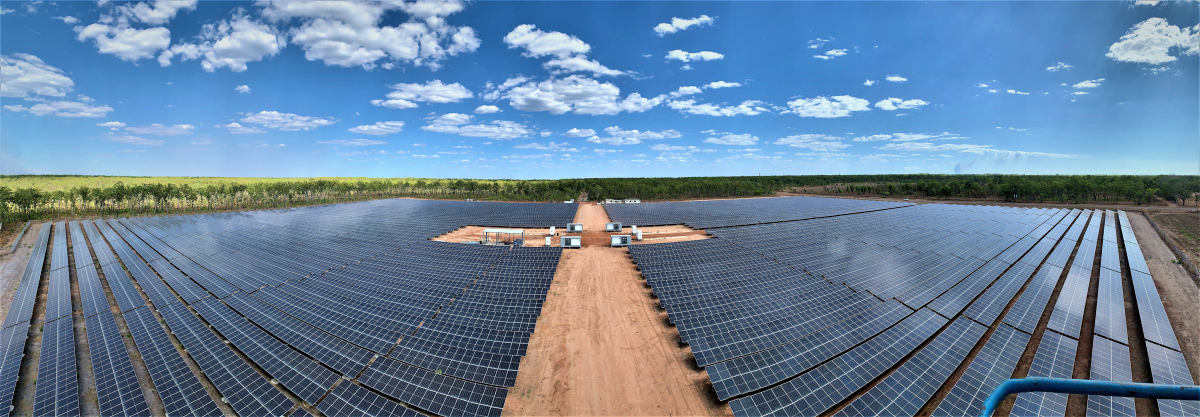Australian solar forecasting and energy system modelling company Proa has installed technology at the 3.2 MW RAAF Base Darwin and 11 MW Robertson Barracks solar farms in the NT, making them comply with the NT government’s strict generator performance standards (GPS).
The GPS requires NT solar farms operate in a scheduled way, sustaining the exported power at their dispatch target during each dispatch interval, which has left some existing, non-compliant NT solar farms unused.
Victor Depoorter Managing Director Proa said the company’s technology offers hope to solar farms in the Northern Territory sitting idle since the strict government regulations were imposed.
“Proa’s system, as well as all the experience we have accumulated at the Defence sites, could help to get these sites up and running. We have a proven track record of cracking complex problems and creating innovative solutions in the energy industry,” he said.
The 3.2 MW RAAF Base Darwin and 11 MW Robertson Barracks solar farms can act like scheduled gas, coal, or hydro generators, being able to deliver to exact energy export commitments.
“The farms completely manage the uncertainty and variability of their generation caused by clouds, bad weather or scheduled outages, backed with small battery energy storage systems (BESS), and our intelligent proprietary tools act as the brain of the Defence sites, making decisions dynamically on how much can be offered to the market,” Depoorter said.
“For example, when there is the risk of clouds causing sudden ramps in the electricity generation, our system will pre-curtail the plant to a safe level that could be ‘firmed’ with the support of the onsite BESS.”
The system includes a high redundancy design and failover mechanisms to ensure 99.99% availability for the “brain” of a power plant, he said.
Commissioned on Feb. 1, the 9,000-panel, 3.2 MW RAAF Base Darwin solar project, located 8 km from Darwin city is the first of five large-scale solar generators connected to the Darwin-Katherine electricity network which has achieved commercial dispatch of energy at 100% of the plant’s capacity.
Djuna Pollard Chief Executive Officer Power and Water, the NT electricity provider, said they are working closely with Defence on other renewables projects.
“We are pleased to be working closely with Defence on other renewables projects, as well as a number of other large scale solar generator projects in the Northern Territory, and look forward to continuing this collaborative relationship,” Pollard said.
The Australian Government is investing $13 million (USD$8.5 million) in solar energy generation and BESS’s at five Defence sites across the Northern Territory, which include Tindal, Larrakeyah Barracks, and Harts Range, as part of the nationwide Defence Renewable Energy and Energy Security Program.
Robertson Barracks, 15 km from Darwin, is a 27,000-panel, 11 MW solar farm and 2.5 MW BESS, scheduled to come online later this year.
The Northern Territory Government has a target of 50% of electricity consumed in 2030 from grid connected installations, including all Aboriginal communities supplied by Indigenous Essential Services to be sourced from renewable energy by 2030, which forms a key part of the Northern Territory Climate Change Response: Towards 2050.
This content is protected by copyright and may not be reused. If you want to cooperate with us and would like to reuse some of our content, please contact: editors@pv-magazine.com.








3 comments
By submitting this form you agree to pv magazine using your data for the purposes of publishing your comment.
Your personal data will only be disclosed or otherwise transmitted to third parties for the purposes of spam filtering or if this is necessary for technical maintenance of the website. Any other transfer to third parties will not take place unless this is justified on the basis of applicable data protection regulations or if pv magazine is legally obliged to do so.
You may revoke this consent at any time with effect for the future, in which case your personal data will be deleted immediately. Otherwise, your data will be deleted if pv magazine has processed your request or the purpose of data storage is fulfilled.
Further information on data privacy can be found in our Data Protection Policy.